In the free wheeling adventures of Doc Savage, his five associates, and his cousin Patricia there was always a lot of hand-to-hand combat and the Savage Saga described the distinctiveness of each character’s fighting techniques and prowess. Each of the members of the Savage Crew had a fighting style of his (or her) own. Based on clues given in the Saga (and further clues from other sources including Philip José Farmer’s Doc Savage: His Apocalyptic Life) we may speculate on what different martial arts they were each trained to use.
According to the Canon, Doc was the strongest of the group followed in order of strength by Renny, Monk, Johnny, Ham, and Long Tom. Doc was originally depicted as being 6 feet tall in the earliest stories but was depicted as being 6 foot 8 inches tall in later stories. He had bronze colored skin and slightly darker bronze colored hair. The bronze skin was supposed to be from the tanning effect of tropical suns in Doc’s youth but that makes no physiological sense. Nor does the idea that Doc kept himself tan with ray-projectors. It is morel likely that this was his natural pigment. He was well proportioned and did not seem unusually large unless he stood next to an average person for comparison. He was not muscle bound but obviously strong and agile but his arms were described as having muscles with tendons “like piano wire” that rippled when he used his hands. His build was more like that of a decathlete than a weightlifter, wrestler, or football lineman though he would have compared to these latter athletes in height and weight.
Renny was originally depicted as over 6 foot 4 inches tall but he may have been much taller since it was implied that he was taller than Doc in the earliest stories. He had the knack of knocking out the panel’s of heavy wooden doors with one punch of his enormous over-sized hands. Monk was only 5 feet 6 inches tall but was almost as wide as he was tall and had arms 6 inches longer than his legs. His apelike appearance earned him his nickname. Johnny was a tall gangly thin man who was described as having a “gland condition” (likely to have been a slightly over-active thyroid) which gave him the build and stamina of a long distance runner. Nevertheless, he could hold his own in a donnybrook and in The Red Skull he knocked out a burly construction worker with just one punch. Ham was described as a ‘waspish’ clothes-horse who nonetheless could give a professional boxer a good drubbing and carried a sword cane wherever he went. He seems to have been like John Steed from The Avengers television show. Likewise, I have always envisioned Patricia Savage as a six-gun wielding taller version of tawny haired Emma Peel. Long Tom was the weakling of the crowd. He was fair-haired and light-skinned with a pale unhealthy complexion. Nevertheless, he could lick 9 out of 10 men on the street in a fight and in The Feathered Octopus we are told that even the Herculean Renny got nervous when Long Tom lost his temper.
What kind of martial arts would these people have trained in? Anyone living in America at the turn of the 19th Century would have been familiar with basic fisticuffs: boxing, wrestling, street-fighting dirty tricks. However, at this same time, exotic fighting styles were becoming known from Europe and the Orient. Western martial arts tended to use weapons like daggers and swords in conjunction with grappling and tripping techniques. Kampfringen was a collection of fighting moves without weapons (with later variations used to compliment swordplay) that could be dated to the Holy Roman Empire in the Middle Ages. Pankration was a similar combat system that went back to the time of the Roman Legions. With the advent of firearms during the Renaissance, these systems went into disuse, but some kind of hand-to-hand combat was always in vogue both in the military and among men generally so elements of these systems were not entirely lost.
French street fighting in the late 18th Century developed a stylized form using kicks and open-handed slaps that became known as ‘Chausson.’ In the early 19th Century it underwent further development and began to including British Boxing techniques, grappling, and stick fighting using either a short stick (le baton) or a longer stick (le canne) and was renamed ‘Savate’. It became popular in France and schools of Savate began to spring up in France with smaller groups starting on the continent in Italy and Switzerland. It never caught on in Britain because it was thought that kicking was ‘unmanly.’ Even so, over the years elements of Savate have been adopted into the military and law enforcement training of many nations including America and Britain. Savate was the first modern western martial art and it laid the groundwork for the popularity of the Eastern martial arts.
In the Far East, combat was still done mano-a-mano using swords and other edged weapons. The martial arts – with and without weapons – continued to flourish there and were widely disseminated with many local variations. The western discovery of these Asian fighting arts inspired imitators in the West. In 1898, British Engineer Edward William Barton-Wright returned to England from Japan and brought with him knowledge of Japanese Jiujutsu and Kodokan Judo which he combined with British boxing and wrestling, French Savate, and a defensive stick fighting style from Switzerland to create a fighting art he called Bartitsu. Later on, it even included some fencing techniques.
This was the form of ‘Japanese Wrestling’ (misspelled as ‘Baritsu’) which had been used by Sherlock Holmes in his epic battle with Professor Moriarty at Reichenbach falls. Barton-Wright’s art fell into disuse and disappeared in the 1920s, but it sparked Western interest in Eastern fighting arts.
Various forms of eastern martial arts had come to the west with Asian immigrants. These arts were generally not taught to westerners until very recently. (For example, Bruce Lee in the 1960s was vilified by Chinese-American Kung Fu masters for training western students.) But various martial artists ended up in side shows in the early 1900s demonstrating their techniques. And the rise in popularity of international athletics led to some forms of eastern martial arts being introduced in the west as sports. So in 1907, the sport of Judo was formally introduced into the United States and by 1910 it was a recognized international sport. Most of the other eastern fighting arts remained relatively unknown in the west until after World War II.
But well educated and well traveled men of the world would have encountered these arts in their native lands and like Barton-Wright studied and applied their techniques. Doc’s crew were those kinds of men and we can speculate about how they encountered the various fighting arts and came to learn them.
John “Renny” Renwick at the start of the Savage Saga was described as not being much help in a fight. By the mid-1930s he had become the next best fighter of the group after Doc himself. He was also the next best pilot, marksman, and driver. But the one thing be was known for was using his huge fists to punch out the panels of stout wooden doors with a single blow. To the naive audience of 1930s America, that would have sounded like a feat of tremendous strength. But experienced martial artists would recognize this as one of the ‘breaking’ techniques often exhibited in the linear or ‘hard’ martial arts like Karate. We can then speculate how Renny developed this talent.
Renny was a top Civil Engineer who worked on numerous projects overseas – including some in Asia – during the Super Sagas. He probably had used his massive fists to pop the panels out of doors since his college days. While working in Japan he may have seen a breaking demonstration by Karate masters and wanted to learn how they did it to improve his own technique. He may have befriended a knowledgeable karatetaka who gave him basic instruction in how to deliver such blows.
The secret to the breaking blow in karate is not to deliver a full force blow with the initial strike. Rather, one allows the hand to be deformed in a relatively prolonged manner by the initial contact and then to rebound to its normal shape more rapidly while in contact with the target. This sudden expansion delivers a rebound shock wave to the target which actually does the damage.
Renny apparently mastered the breaking blow with his fists, but did no retain much else of Karate as a fighting style. He depended on his height and weight along with his mighty punches in a fight. Later when he began joining into Doc Savage’s adventures on a regular basis, it was clear that he needed a more balanced fighting style. Doc would have been aware of Renny’s earlier Karate training and sought out a teacher for him suited to his overall body habitus. There were three traditional Karate styles from Okinawa all of which emphasized linear empty-handed combat with the occasional use of farm implements as weapons. In the early 20th Century, innovative new forms of Karate were developed in Japan to make Karate more practical in hand-to-hand combat. This included an emphasis on defensive moves, circular or soft techniques, and the ability to maintain balance while pressing the attack forward. The ancient weapons techniques became less important, though they were not entirely eliminated.
Doc would have chosen one of the more modern schools for Renny to round out his fighting skills. Most likely it would have been one of the half-hard, half–soft schools such as Gōjū-ryū. This would take a powerful man like Renny and turn him into a well balanced fighter who used technique, not mere brute force to defeat his opponents. And it would have made his breaking blows more disciplined and devastating.
Monk was the next strongest of the group. He is depicted as being able to bend pennies and silver dollars in half between thumb and forefinger. We are also told that in anger he once bent the barrel of a revolver. He was short – around 5 foot 6 inches tall – with broad shoulders and arms that were longer than his legs. He would have had a low center of gravity and an exceptional reach. We are told in The Talking Devil that Monk took great pride in his fighting skills and hired wrestlers and Jujutsu instructors to teach him new tricks. We are also told that Monks fights were always very noisy, He like to scream and bellow during a donnybrook.
All of this points to some form of combat Jujutsu as Monks predominant fighting style. He was built to fight low to the ground and had all the advantages in leverage with his long reach. The modern combat forms of Jujutsu also emphasized some atemi (strikes), but Monk probably had more experience with boxing while growing up in Oklahoma that would have been helpful in a fight. With his bulk and long reach, Monk would have had a big advantage in a boxing match even with his short stature. And with his temperament, he would have been likely to use every kind of street fighting “dirty trick” there was. The one thing he would not have been good at would have been kicking strikes with his proportionately short legs.
The shouting he used was the classical kiai technique that can unnerve and disrupt and opponent’s concentration while tightening the muscles of the body and hardening them against injury. It is even said that a properly used kiai scream can itself inflict serious injury on an opponent.
In the end, Monk was a studied and well disciplined street fighter who did not depend on his bulk but on his low center of gravity and natural advantages in strength and leverage in his upper body.
Johnny was the next strongest of the crew. He was tall – likely over 6 feet – and thin but in excellent shape. We are told in Quest of Qui that he could run for long distances without tiring. But he could also hold his own in a fight. In the movie Doc Savage: The Man of Bronze, Johnny is depicted as an adept in the use of pressure points consistent with an advanced knowledge of Shaolin Dim-mak. This resonates well with his character. Because of his build, he would need to use a martial art that took advantage of a long reach and a light build.
As a geologist and archaeologist, Johnny would have traveled all over the world and likely been to China many times. Next to Doc, he is the most intellectual and well educated of the crew. While there he would have been exposed to the various forms of Kung-fu, one of which is Fujian White Crane. This martial art technique is originally attributed to a woman Fāng Qīniáng, who around 1700 developed it after trying to scare a crane away form her father’s fields using a stick and basic Kung-fu techniques. The crane used its long legs and wings to counter all of her moves. She studied the birds after that and adapted their movement to fighting.
As a scholar, Johnny could not help but learn some of the other more complex Kung-fu adjuncts such as Dim-mak (training attacks on pressure points and meridians to kill, incapacitate, or otherwise control an opponent), Chin-na (controlling or locking an opponents joints, muscles, or tendons so he cannot move), and “Iron Shirt” Qigong (the use of breathing patterns, herbs, exercises, and meditation to strengthen the flow of chi energy through the body for the purposes of toughening the body against injuries and healing damage or disease).
Since Johnny also was in the intelligence service during World War I, it is possible that he also studied some of the Japanese espionage martial art Ninjutsu. The source of Ninjutsu is controversial. There is an obvious Chinese influence with many philosophical principles derived from Sun-Tzu’s Art of War. The Ninja’s skills included gathering information, non-detection, avoidance of conflict, and misdirection with training in disguise, escape, concealment, archery, medicine, explosives, and poisons. This would have made Johnny a formidable agent on par with James Bond.
Ham Brooks was the proper Harvard educated lawyer and would have moved in the upper classes. During World War I, he was a Brigadier General in the US Army Judge Advocate General’s Corp. We are told in the Super Sagas that Ham was nimble enough to give a professional boxer a good tripping. And he was quite handy with his sword cane. This points to him having been on the boxing and fencing teams at Harvard. While he was stationed in France during the war, Ham very likely new french officers who practiced Savate kickboxing. This was a very fashionable activity for French gentlemen during this time. Part of the training included the art of stick fighting using a walking stick (le canne). There was even a form of stick fencing which mimicked the use of swords.
While in Europe, Ham may have heard of the fighting system Bartitsu which had been developed in England. By that time, Bartitsu was in decline and there were few practitioners. Nevertheless, its developer Barton-Wright continued to teach students into the 1920s. This eclectic martial art would have been well suited to Ham as both a gentleman’s sport and a comprehensive fighting art. It included boxing, grappling, stick and sword fencing all of which we know he used with great effectiveness in the Super Sagas. It may be that Ham was one of the last great practitioners of this lost martial art to learn it from the hands of its founder.
Long Tom Roberts was the weakling of the crew, but what he lacked in physical strength he made up for in fighting fury. He was apparently the most effective of Doc’s associates in a fight even surpassing Renny and Monk at times. His fighting style was hard and linear from the way it is described and seemed to lack the subtler soft or circular moves one sees in Wrestling or Judo.
Among martial arts aficionados it is well known that the most powerful and dangerous martial art form is Muay Thai kickboxing. It is almost purely offensive and involved using multiple and combination blows from the “eight points”: feet/shins, hands, elbows, and knees. A more aggressive “nine point” street fighting style includes head butts. There are also a limited number of clinching and grappling techniques. Compare this to Western boxing which uses only two points (the fists) and most Eastern martial arts that use four points (hands and feet).
Long Tom likely was scrappy by nature because he appeared to be so sickly that bullies often picked on him. They were in for a big surprise when they attacked the this frail-appearing firebrand. He probably had quite a bit of street fighting experience before he met Doc Savage. It is unlikely that Long Tom would have learned about Muay Thai in the normal course of his life since its practice was restricted to Southeast Asia. But once again, Doc Savage would have known about it and realized that Long Tom was the perfect student for this aggressive fighting art. He likely arranged for an Ajam (master) for Long Tom’s instructor and Doc may have sparred with him himself. From the description of Long Tom’s skills, only Doc himself could have been a fit sparring partner for him.
Patricia Savage was depicted as a tall, athletic woman who kept herself in good shape at her New York beauty salon and spa. She had the same bronze skin, bronze hair, and golden eyes as her cousin, Doc. This once again argues for a family trait as opposed to the result of tanning. She was probably at or near 6 feet tall. She was nowhere near as strong as Doc, but she was no weakling. Philip José Farmer in his pastiche A Feast Unknown has her holding off Jocko’s (Monk’s) drunken advances with ease like an Amazon. This was also how she was depicted in the one-shot Millennium Pat Savage comic. Farmer speculates that she was “big boned” as were Doc and Monk due to residual Neanderthal ancestry. The larger bones would have had larger muscle insertions thus increasing the muscle’s mechanical advantage. Since Pat was a professional physical fitness expert, she would have had plenty of time to develop her athletic prowess and fighting skills. She had grown up on a ranch in Canada and must have been a tomboy. She carried a large bore six-gun with no trigger loaded with custom made mercy bullets. She would fan the trigger to fire it.
The fighting style she uses in the Super Sagas included boxing techniques, jujutsu-like grapples and throws as well as some “un-ladylike” moves like inserting a finger in her opponent’s nose and dragging him around by it. This variety of hard and soft techniques points to a martial art that was well balanced and designed not only for self-defense but also for physical conditioning and mental relaxation. The ideal martial art that meets these requirements would have been Aikido, which was developed in the 1920s and 1930s in Japan by Morihei Ueshiba as a synthesis of his martial studies, philosophy, and religious beliefs. Ueshiba's goal was to create an art practitioners could use to defend themselves without injuring their attacker. This was an ideal art for a woman who might need to fend off unwanted male advances without risking more severe physcial retaliation. But in a pinch, Aikido could deliver incapacitating blows, pins, grapples and throws. The use of small weapons was also part of the technique.
More than many other partial arts, Aikido concentrates on cross trianing and voerall physical and mental fitness. It includes relaxation techniques, mental awareness, and an emphasis on the balance of “Chi” energy flowing through the body. This would have been the perfect martial art for a physical culture advocate like Pat Savage to learn and to use in the exercise classes at her salon. She would have used it in self-defense seminars for her female clients.
Once again, only Doc Savage with his extensive knowledge and contacts throughout the martial arts world could have arrangd for this type of training in the 1930s. In fact getting Pat trained in this martial art may have been its primary intordcution in the United States.
We then come to Doc Savage himself. We know that he was well versed in all kinds of fighting techniques and that his father had arranged for him to be trained by the best martial artists in the world. He not only learned all the Western fighting arts such as boxing, wrestling, Pankration, and Kampfringen, but Karate, Judo, Jujutsu, Kung-fu, Taekwondo, Silat and other Eastern arts. He was even privy to little known martial arts such as Capoeria, Muay Thai, Baille, Adhti, Sambo, and the fighting art of the Berbers.
But Doc could not have been limited to these systems. He was destined to be the supreme adventurer of his time and there is only one martial art technique that would have been worthy of his skill: Sinanju, the deadly art of the fabled North Korean house of assassins.
Sinanju is the sun center of the martial arts. It is the pinnacle of over 4000 years of human personal development and training. Every other martial art is rumored to be an off shoot based on partial information about Sinanju techniques. It is said that no white man had ever been trained in Sinanju until recently, but Doc is not a typical “white” man. He is the man of bronze and in his ancestry there is blood form virtually all racial backgrounds to include some Neanderthal genes.
The story of the House of Sinanju has been chronicled in the Destroyer series. Descriptions of the Sinanju master Chiun show some interesting parallels with Doc Savage and may indicate that they have similar training. Neither Chiun nor Doc uses any weapons other than their body and their wits in battle. Both of them are expert climbers who can scramble up a flat wall using nothing but fingertips for handholds. Both move so fast that often their actions cannot be seen with the naked eye. They both know exactly what time it is without needing to use a watch or clock. Btoh are master escape artists. Both have developed their bodies and their senses to the peak of human perfection. Both are masters of the human body and can manipulate nerve points to induce pain, paralysis, unconsciousness, obedience and even death. Despite Doc’s size and strength, he is described as being well proportioned without weightlifter bulk. Both Chiun and his disciple Remo are lightly built and almost frail despite having enormous strength and endurance. And finally, Doc and the Sinanju masters can kill or incapacitate a man with a single blow.
I think this last similarity is most important. When doc began his career, he had an almost cavalier attitude towards the lives of criminals very much like Chiun and Remo do. He was more likely to dispose of them than to try to rehabilitate them. But somewhere Doc realized that he could not continue in this fashion and still be the man his father wanted him to be: the archenemy of evil. He was becoming more like his enemies with every life he took. I think the turning point for him was in Quest of the Spider. At the end, one of the criminal henchmen reformed and sacrificed his life to save those of Doc and his crew. I think his had a profound effect on Doc. One of those enemies that he would have killed so casually – the ignorant uneducated Cajun Buck Boontown – actually had given his life to save Doc. I think we can see a change in Doc in subsequent adventures until he eventually becomes reluctant to take any life except out of rare necessity. I think this was the undoing of some of the attitudes he had absorbed during Sinanju training.
In summary, each of the members of Doc Savage’s crew showed different fighting styles and proclivities. From these clues, we can ascertain in which martial art they were probably trained. Doc Savage himself was the supreme martial artist of the group and very likely was schooled in Sinanju, the sun-source of the Martial arts itself. Yet he became very cautious in his career not to exercise his deadly skills without restraint and this may explain his reticence to engage in violent confrontation. He never felt threatened even when he was allegedly in the power of his enemies. He always had the power to either escape or overcome them. But he always preferred to out think them and to over come them in a manner that would allow him to rehabilitate his enemies without harming them.
Subscribe to:
Post Comments (Atom)

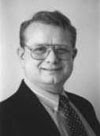

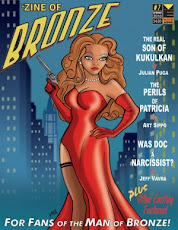
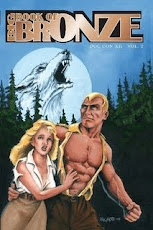



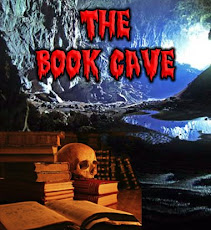


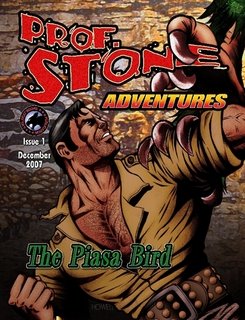


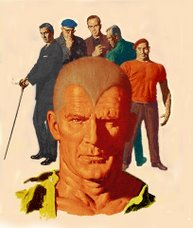

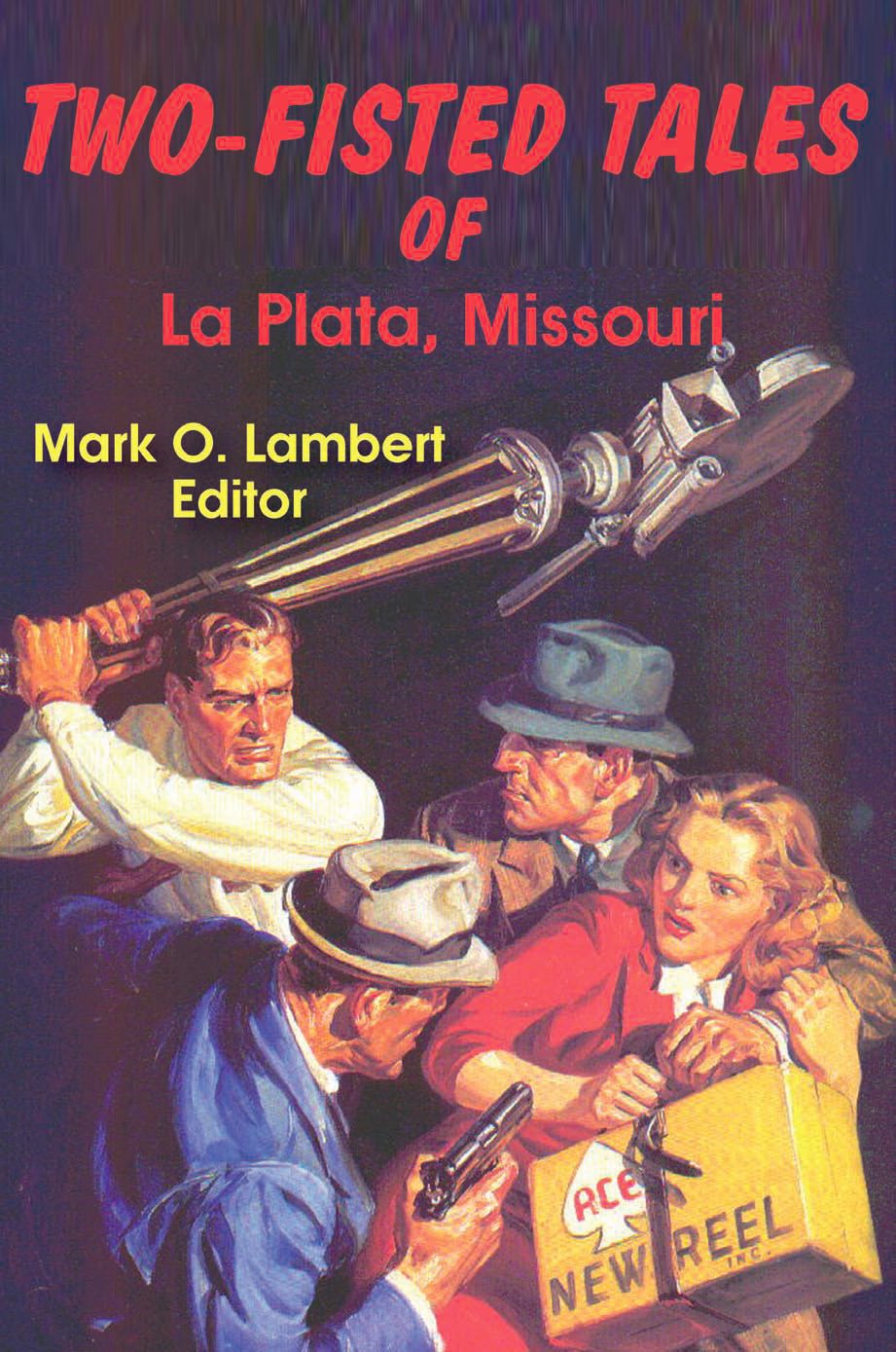
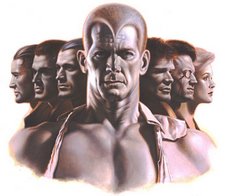


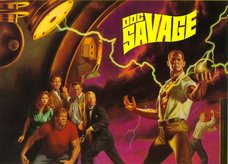





1 comment:
very cool! well thought out and explained... i look forward to more!
dani, bbi dimmer
8-)
Post a Comment